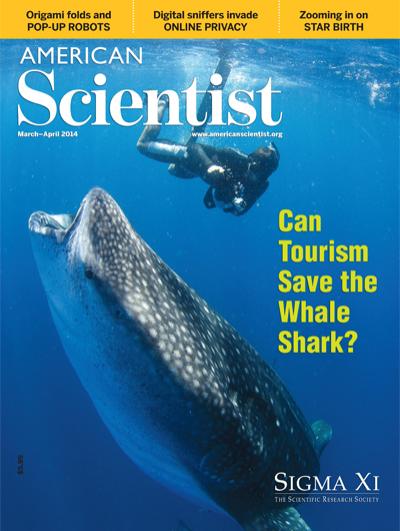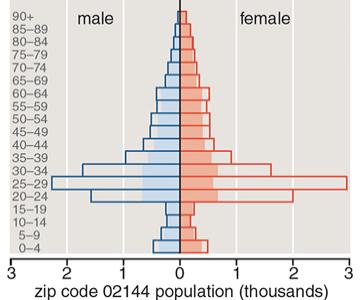Magazine
March-April 2014

March-April 2014
Volume: 102 Number: 2
A snorkeler off the coast of Isla Mujeres, Mexico, dives to get a close-up shot of a whale shark (Rhincodon typus). Despite its gaping mouth, this filter-feeding shark poses no threat to the diver. The whale shark population is thought to be in decline, but much of the creature’s behavior is still poorly known. In “Social Media Monitors the Largest Fish in the Sea,” Tim K. Davies describes the potential for monitoring whale sharks using tourists’ photographs shared via social media. Because every whale shark has a unique pattern of spots, the photos can divulge a particular shark’s location over time. That information can then be used to track migration patterns and estimate population numbers. (Photograph by Luis Javier Sandoval Alvarado, Getty Images.)
In This Issue
- Art
- Astronomy
- Biology
- Chemistry
- Communications
- Computer
- Engineering
- Environment
- Evolution
- Mathematics
- Medicine
- Physics
- Policy
- Technology
Social Media Monitors the Largest Fish in the Sea
Tim K. Davies
Technology
Snap-happy tourists can help researchers working to understand and conserve whale sharks.
The Challenge of Manufacturing Between Macro and Micro
Robert J. Wood
Engineering
Classic ways of folding paper into dynamic shapes—origami, pop-up books—inspire methods to engineer millimeter-scale machines.
Simulating Star Formation on a Galactic Scale
Clare Dobbs
Astronomy Computer Technology
Powerful calculations provide an unprecedented view of stellar birthplaces.
Twisted Math and Beautiful Geometry
Eli Maor, Eugen Jost
Mathematics
Four families of equations expose the hidden aesthetic of bicycle wheels, falling bodies, rhythmic planets, and mathematics itself.








